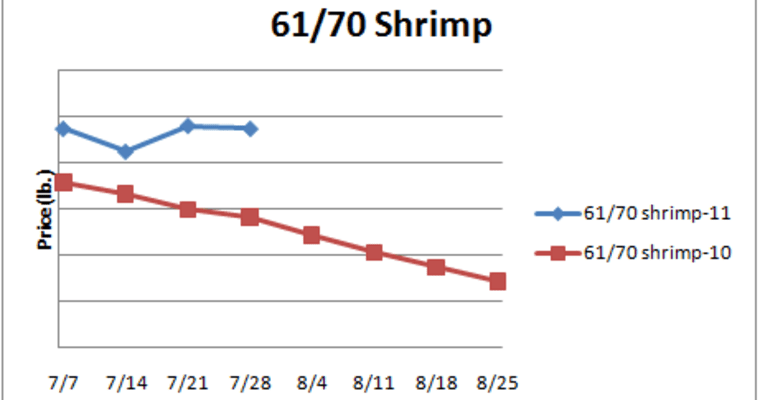Restaurants are the most common setting for foodborne norovirus outbreaks.The largest source of food contamination comes from the food handlers who have been infected with norovirus. The most common setting for non-foodborne norovirus outbreaks comes from long-term care settings, such as nursing homes.
Norovirus Quick Facts
- Norovirus is highly contagious and can cause severe disease. About 1 in 15 U.S. long-term care residents become infected each year, causing up to 800 deaths
- Person-to-person contact and foodborne transmission are the main ways that norovirus outbreaks occur
- Of those foodborne outbreaks in which a single cause was identified, 48% were caused by norovirus, making it the leading cause of foodborne outbreaks in the U.S.
Steps to Avoid a Foodborne Norovirus Outbreak
Good hand hygiene is the most important factor in controlling the spread of norovirus and other germs. The Centers of Disease Control and Prevention (CDC) recommends improved adherence to hand hygiene, requires ill workers to stay home until they are symptom-free for more than 48 hours, and formal training and certification of kitchen managers on food safety.
Follow these standards to assure you are doing your part.
How to Wash
- Clean hands and exposed portions of arms for at least 20 seconds following these steps:
- Rinse under clean, warm running water
- Apply soap and rub all surfaces of the hands and fingers together vigorously, giving particular attention to the area under the fingernails, between the fingers/fingertips, and surfaces of the hands, arms, and any prosthetic devices
- Rinse thoroughly with clean, warm running water
- Thoroughly dry hands and exposed portions of arms with single-use paper towels or a heated-air hand dryer
- Avoid recontamination of hands and arms by using a clean barrier, such as a paper towel, when turning off sink faucets or touching the handle of a restroom door
When to Wash
- When entering a food-preparation area
- Before putting on clean, single-use gloves
- Before starting food preparation
- Before handling clean equipment and serving utensils
- When changing tasks, including switching between handling different types of foods
- After handling soiled dishes, equipment, or utensils
- After touching body parts other than clean hands and clean, exposed portions of arms
- After coughing, sneezing, blowing the nose, using tobacco, eating, or drinking
- After using the toilet
- After any activity that introduces cross-contamination prior to handling food or clean dishes, equipment, or utensils
Additional Precautions to Reduce the Spread of Norovirus
Hand sanitizer. Hand sanitizer is not a substitute for washing hands, but offers added protection. The Food and Drug Administration (FDA) does not allow makers of hand sanitizers to claim norovirus protection. However, studies show that alcohol-based sanitizers can reduce the activity of norovirus, and are highly effective against other common germs.
No bare-hand contact. A crucial step in preventing germs from traveling from a worker’s hands to another host is simply not to touch the host. For example, if a food worker’s hands are infected with norovirus and they use those hands to place a lime wedge in a patron’s beverage, the norovirus is likely now on the lime and, ultimately, in the beverage. If the worker had used tongs, the beverage and the patron would be more likely to stay safe.
Standard operating procedure, consistent with the FDA Food Code, is to avoid bare-hand contact with ready-to-eat foods. Use utensils such as deli tissue, tongs, or single-use gloves to handle ready-to-eat foods, which are defined as anything that has completed the preparation and/or cooking process and is ready to be served. Foodservice employees need to remember that any food item to be served directly to the customer cannot be touched with bare hands.
Gloves are a convenient solution for this, as they create a barrier between hands and food. They should never take the place of hand washing, but should be used together. If misused, gloves can be harmful, creating a false sense of security. Proper cross-contamination precautions and other standard food-safety procedures still need to be followed.
Sanitize and disinfect. Remember to keep countertops, tables, and other surfaces clean and safe. Regular procedures for cleaning, sanitizing, and disinfecting appropriate surface areas are key to interrupting the spread of germs. Clean and disinfect all areas that may have been contaminated by an ill worker or patron with a chlorine-bleach solution with a concentration of 1,000 to 5,000 parts per million (PPM). This equates to five to 25 tablespoons of household bleach per gallon of water.
It’s critical to follow manufacturer instructions for application, amount, dilution, and contact time. Always remember to wash table linens, napkins, and other laundry thoroughly.
Keep sick workers away. It’s important to ensure that your workers are healthy. Food handlers with norovirus illness can transfer germs to guests or residents through the food you serve. According to the CDC, approximately 25 percent of all foodborne outbreaks can be attributed to infected food workers. The Food Code lists symptoms for which you should restrict or exclude an ill employee from working around food. “Exclude” means the person is not permitted to work in the establishment as a food employee. “Restrict” means an employee’s work is limited to activities that do not include exposed food or clean equipment, utensils, etc.
For example, a restaurant employee who has a sore throat with fever should be restricted, and a restaurant employee who has vomited in the past 24 hours should be excluded. A full list of exclusions and restrictions is available in section 2.201 of the Food Code. There are specific guidelines for operations that serve a highly susceptible population, such as hospitals and nursing homes.
Check state or county laws for rules specific to your area.
The bottom line? Keeping people safe is essential to maintaining a spotless reputation. Proper hand-washing is the most important safe food-handling practice—and it’s one easily within reach of any food service operator.




























